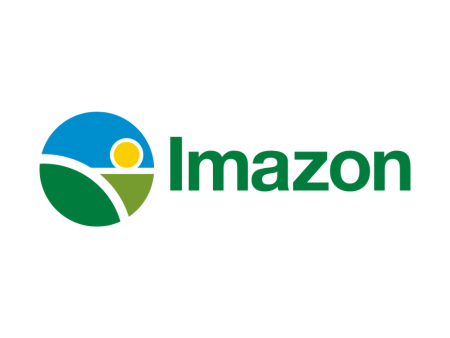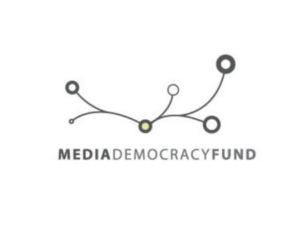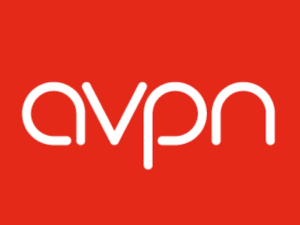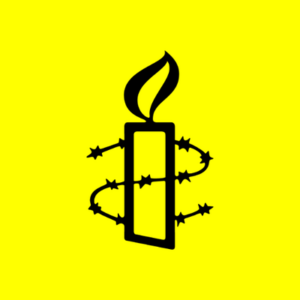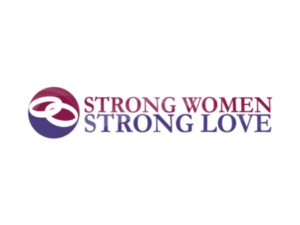Imazon (Amazon Institute of People and the Environment) is a research institute that promotes conservation and sustainable development in the Brazilian Amazon.
Beto Verissimo of Imazon spoke with Alec Saelens on May 9, 2024. Click here to read the full conversation with insights highlighted.
Alec Saelens: Can you introduce yourself, describe the problem you are addressing with your organization, and discuss how you are responding to that problem?
Beto Verissimo: I’m Beto Verissimo, and I’m a co-founder of Imazon, a think-and-do tank organization working in the Brazilian Amazon. I have a graduate degree in agricultural engineering, and I also have a graduate degree in tropical ecology, so I have both kinds of training.
Imazon was established 35 years ago. It was a very unusual organization because it was very research-oriented and focused on the “think” aspects, but it also tried to do things. Think and do is an expression that captures Imazon’s role in the region, based on the idea that information has power. If you generate high-quality information, scientific information, relevant information, and that connects with the social, economic, cultural, and/or institutional reality, it enables you to look for not only broad solutions but solutions that are specific in addressing critical issues.
Imazon was established to be an organization focused on the conservation of the rainforest, so I’d say the goal is to make sure the forest is there. We protect the forest. There are a lot of organizations that have the same kind of goal, but we have a very science-based, solutions-oriented approach. We’re a very pragmatic, empirical organization that tries to be grounded in the reality of the region.
If you want to protect the rainforest, you have to understand the economic and social forces that drive the problem and understand that those forces might also be driving the solution because ultimately, it’s a socioeconomic question that creates the pressure to deforest. If you want to protect it, or if you want to stop or reduce deforestation, you have to understand what moves deforestation. Imazon is trying to understand that.
Imazon wants to reduce deforestation, protect the rainforest, and reduce emissions; those have been the three major indicators that, over time, explain our work. When deforestation increases, we ask: What’s wrong, what did we miss, and what conditions are now moving in the wrong direction? Or if deforestation is down, we ask: How can we sustain this systemic change and make sure that deforestation does not increase again?
We’re developing a lot of tools to address this problem because it is a big problem, and we have to find a very good theory of change, which is just a strategic approach for addressing a very large systemic problem. We are a relatively small organization, and we need to discuss what we can do.
Alec Saelens: What makes your organization distinctive compared to other organizations that are also thinking about the preservation of the Amazon and reducing deforestation? What makes your organization unique?
Beto Verissimo: First of all, it’s unique because it has always been a science-based organization. It is very different from organizations that are more grassroots or activist-led, or full conservation organizations. Those are very important organizations, but we tried to find and fill the gaps. When Imazon started, there was no single organization looking to produce rigorous, scientific-quality research. Second, we are an evidence-based, empirical organization that tests ideas. For example, going back about 35 years, to the 1990s, we looked at timber extraction and logging. Logging was a big problem at that time. The Amazon region was being ripped up for timber extraction, so we looked at this problem and asked: What can we do about it?
In one way, that required thinking about logging as a problem, but it also required thinking about logging as part of the solution. We looked at developing forest management methodologies and techniques to allow timber to be extracted under better timber management practices because in the end, if you remove just a few trees, and you practice technically sound management, it allows you to keep the forest standing and still personally benefit from the forest’s value. But we’ve never done this before. Nobody has tested the ideas behind best practice forest management. How should you cut the trees, how should you harvest the trees, what trees should you harvest, and what techniques should you employ? Imazon did. We decided to pilot a project in the hot spot of the timber problem: the Brazilian Amazon.
We made alliances with timber companies, like Caterpillar from the United States, that provide bulldozers, skidders, and other typical equipment. Then we got funding from USAID [the United States Agency for International Development] and established technology partnerships. It was a remarkable achievement because at the end of the two-year project, we established a sustainable base for timber management in the Brazilian Amazon. We developed 500 acres, and now companies are replicating this model across almost 20 million acres in the Amazon. We’re not replicating; we just established the basis for this work. It was a project that involved the logging companies, so at the end of the day, the logging company could tell all the loggers about it, not us. We are just known scientists, working. That’s something that I would say represents our approach.
I think the second unique characteristic of Imazon is working across the aisle. In this case, we talked with the bad guys instead of blaming the bad guys. That said, sometimes it’s very important to blame the bad guys, the loggers. But in this case, we said to the loggers, “If you guys want to do something differently, we are here to help and to assist you in a way that supports your transition from bad practice to good practice.” Working with others who are usually the enemies or the perpetrators of the problem to find ways to create an alliance, and sometimes to break those groups into parts so we can work with the part that wants to move ahead, is something that Imazon has always done.
Third, Imazon is still a very small group, only 30 people, so there has to be storytelling in our work. Imazon upholds a nurturing idea that telling stories is very important. When we address a problem, we think about how we can communicate this problem or idea. For our timber management project, we intentionally established our site near a city that journalists could easily visit. Filming and documenting the experience from the beginning was part of the project. Although Imazon has no journalists on the team, the idea to tell the story has always been present.
Our idea is also to be an organization that really focuses on problems and understands that addressing problems takes a long time. We are not jumping from one problem to another. Usually, donors and organizations try to jump. They work for two years, [and then move on to the next one.] People have an idea, and they sell a silver bullet solution. There’s no silver bullet here. Nothing we are addressing here can be easily fixed. It takes time. It’s complex, and you have to get dirty. In the case of logging, we have to understand logging, then we have to find solutions and replicate the solutions, and then think about changing the policy and practice. It takes about 10 years to address the broad spectrum of a problem this way.
Imazon tries to stick with the problem for a long time, to really solve the puzzle and produce the evidence. Our approach is to look at and be very close to the problem, be grounded in it, and then listen. If you talk with the people on the front lines then the problems become clear, and what needs to be done becomes clear. Being very close to the problem helps us choose the most pressing problems that we can address with our methodologies. Sometimes there are problems we cannot fix, or we cannot address. For instance, we are not dealing with criminality. We’re dealing with land use and conservation issues like that. Being close helps a lot.
Imazon’s culture is to approach things in a very quantitative way and develop understanding by measuring and studying the elements of the problem, but there are qualitative elements as well, so it’s a combination of qualitative and quantitative. Our team has training in economics, sociology, and land use. We try to be low-key in that Imazon is not an organization that tries to dominate the dialogue or narrative. We want the problem in the center, the solution in the center. We’re small, but we want to move big problems and address big problems, so we have to have a coalition. If your brand is too big, you just create jealousy and competition. We want to come together.
Any solution that we develop and test, we always do with somebody else. We never do it alone. Most of the time, the idea comes from us, but not always. The implementations almost always include other organizations, and those organizations have different roles. Some are engaged in training aspects, others in advocacy or lobbying, and some are policymakers. These organizations have other talents that we don’t have. We have a big mission and a small group. If you want to keep it small and you have a big ambition, it forces you to take a more qualitative, impact approach. Sometimes, when other groups come onto the work, Imazon’s job is to provide a backbone or structure. We coordinate efforts and make sure that everyone is aligned with the mission. We spend a lot of time making sure the people are aligned with the goals because if you don’t have the same goals, it’s difficult to address a problem.
For instance, we spent an entire year talking with the loggers, making sure that they had the same goal that we did. We explained that we wanted to do forest management instead of predatory logging for different reasons, like market pressure, or market opportunity. Some of those groups said, “Okay we are on the same page, we want to do this.” So we established the metrics on it, made sure that we were on the same page regarding the metrics and how to measure our progress to achieve this goal, and then we provided the backbone for the work. That’s part of the methodology behind how Imazon can achieve relatively great results with a small team and relatively small budget over a long period of time. Trying to understand the specifics of the problem is, in a sense, the secret, if there’s a secret behind how we do this. It’s like a peer review. When you publish, you go to peer review in scientific terms, but this is like peer review in social and political terms because you are exposed to the problem all the time and you are exposed to peer pressure from the stakeholders. The peer review process is all-important here.
We are trying to address a big problem around the largest rainforest on the planet. When we started, we were losing this rainforest at a very fast, chaotic pace. If we want to conserve this rainforest, which is the size of the US continent, what can we do about it? What is the specific role of Imazon in this big, global issue that will impact generations at a global level? This is a complex, wicked problem that has great impact now and beyond. From the beginning, that has been the size of the problem in front of us.
Alec Saelens: Thanks for that great explanation. I think this pursuit of developing solutions from intricately understanding the problems, bringing together a range of different stakeholders who care about the problem while you operate as a coordinator of their efforts, and understanding the incentives that might bring people on board and keep them focused on the same goal is a cornerstone of how to think about systems change.
My question to you in response to that is: What are your measures of success? You talked about the importance of understanding the metrics you work with in order to assess change and having metrics everyone can agree to. From a larger perspective, what are those indicators of success that you track?
Beto Verissimo: Because Imazon tries to be very close to the problem, we can anticipate trends, think ahead, and be prepared. When opportunities arrive, we are ready to influence. In the case of timber management and logging, we did this because, in the 80s, timber became a critical problem in Southeast Asia and the Amazon rainforest. There was a moment when a lot of people were talking about this issue, helping us achieve this understanding that it’s possible to do forest management. If you develop these techniques in a cost-effective way, they can be replicated on a large scale and can operate as a counterargument to illegal logging, or the logging as business as usual. That was one way to look at it. The results were how much forest management area has been created or has adopted those management techniques based on the 500 acres that we developed.
So we started with 500 acres, and today, there are probably more than 50 million acres [that have adopted these practices], and these practices have become law over time. Nobody can say there is no solution. We have a technical solution that makes sense in economic terms. Of course, there’s still illegal logging, not because we don’t have a technical alternative but because the second element I want to mention is that in most cases, the deforestation in the Amazon region has nothing to do with economics in the short term. They do not clear-cut the forest because they need to produce more food. It’s a land speculation system. It’s driven by the land, not by the products. There were a lot of pieces published in the early 90s that qualify and make clear the problem, and that have helped us realize that there are a lot of alternatives for much better land use. That was the first indicator for Imazon.
Second, it was very clear in the 90s that the 80s had a timber problem. The 90s were something different. Forestation was getting bigger, and when we looked at the land and the map of the Amazon, we saw a lot of public forest that was not protected. The scale that I’m talking about here is bigger than Germany, Spain, and France combined. That was the size of forest on the map that was public, but not allocated. Those illegal land grabbers were moving in the direction of the forest, so we decided to start to understand the socioeconomic dynamics that move the frontiers. We prepared our capacity to produce maps that show exactly what’s going on so that the government can ask us and others to help them establish protected areas and conservation units. Imazon was invested in and prepared for this moment. And this moment arrived in the late 90s, when Fernando Henrique was the president of Brazil. For geopolitical reasons, Brazil was worried about those land grabbers and was asking, “What can we do about it? How can we create protected areas?”
People would say we don’t have maps, but we did have maps. Imazon had been mapping the problem. There was a law in Brazil that gave us specific guidelines on how to create a protected area and how to do a technical study using secondary information, maps, and satellite images. Imazon has been developing satellite image technology for years. Today, it’s very common, but in the 90s, it was a very new technique and few organizations in the world had this capacity. Imazon developed this capacity. I published a scientific paper about that. But to make the story short, I’ll look at the period starting with Fernando Henrique through the current Lula government. In that period of time, Brazil created a protected area roughly the size of Texas, and Imazon was directly involved in providing inputs, maps, and sometimes technical studies in at least 1/3 of that region, as well as for others. In the end, we got the information, we looked at the trends, we anticipated the trends.
We needed that information that plays a major role in mapping, so we started to produce and publish those forest maps, sometimes in partnership with a government agency. When the time arrived, the maps were validated by the government and were considered to be proof of evidence and part of the technical study that allowed the government to create those protected areas. The government created those areas because it’s public land, but our work behind the scenes was critical.
So to recap, to address the deforestation problem, in the first case, timber extraction was a problem, and we tried to break the problem into two parts, a problem and a solution. Then, we wanted to protect those lands. There was a piece in The Economist that said this was the most important achievement of Brazil during this period because we created a very big area to protect. Today, we still have some areas that are not yet protected because the government didn’t finish the work that had to be done.
We can take several cases. The third case received the Skoll Award back in 2006. We helped the satellite images become more available, cheaper, and closer to real-time, but nobody actually thought about how simple it was to measure deforestation every month and report that information to the press in Brazil, so it could become the main indicator of Brazilian environmental policy in the Amazon region. In 2006, Imazon was the system alert of deforestation. The idea was to increase the transparency of information and create a pressure that’s unstoppable. From 2006 up until today, we’ve been publishing reports every month, a practice we maintained even through the Bolsonaro era. Today, other systems are operating. There is no more possibility of hiding this information.
Satellite imaging is there. Several organizations are mapping and producing maps. Maps have a tremendous influence on evaluating the government results in terms of policy. We thought of addressing deforestation by sharing information via mapped deforestation every month, like the stock market. It would be great to measure every day, but we measure at least every month and that’s another example of how we measure impact. That practice of forest transparency that we developed, and the idea that we can monitor it, is basically what we won the Skoll Award for. Today, there’s a network of organizations talking about monitoring the entire tropics, using the same idea that was developed back in 2006.
Alec Saelens: It’s great to hear that part of your work is a tool to hold governments accountable, to help them shape policy and do better regulation for conservation. What are the challenges that you face in your work? Let’s leave fundraising and getting funding to the side because that’s a common issue. But what other problems do you find are obstacles to doing the work, and how are you trying to address them?
Beto Verissimo: Politically, it was very difficult during the Bolsonaro era because we had an extreme right-wing government that wanted to put a stop to transparency. The government stood against the journalists and the scientists that produced information. Being a small, independent organization, you are on the frontline, and you are at risk of being attacked, so you have to spend a lot of money to create safeguards to protect your staff. You face invasion from hackers, you face a police state when you have a regime that’s inclined toward totalitarianism. Although Brazil is a democracy, Imazon was, from the beginning, attacked by the government because we produce information that matters.
Now the situation is getting better. Deforestation is decreasing, but it’s become a territory of criminality for drug dealers and the like. We’re seeing security issues, not for us, but for those doing fieldwork in the regions. It’s becoming a dangerous place, more like El Salvador or Central America. Many areas need security to always be present.
[Transfer of power can be another obstacle.] I’m a co-founder of Imazon, and the first executive director, but I’m not the executive director anymore. I was the executive director for the first two years. In the last 32 years, Imazon has been able to change leadership eight times. I don’t like the idea that first you create an organization and then you become the organization, so today, I’m associated with Imazo, but my time is split between Imazon and other things that I’m doing.
When we received the Skoll Award, it was unique because the two awardees were not leaders of the organization. I was not the leader of Imazon when we got the award in 2010. I was just associated. I was speaking about Imazon, but then we got about 10 other people that can tell the same story. We’re getting older, so we have to transfer to the new generation. But sometimes, passing the torch is incredibly challenging.
The final point right now is that the Amazon is a hot spot. The forest value has increased. Everybody is thinking about solutions. The big challenge is to keep disciplined and stay focused. There are a lot of temptations to be distracted by problems, and by solutions as well. We have to stay focused on what we can do concretely.
Being disciplined, focusing on particular issues that sometimes are not necessary but can pay off, and anticipating trends are all important. When we anticipate trends, we avoid being trapped by the paradigm that moves most of the philanthropy, the idea of: Can’t we just find fantastic heroes and support the heroes to solve a big problem? That is not possible. It’s hard work over a long time that can deliver results. Of course, strategy is very important, but it’s the hard work that delivers results.
Alec Saelens: What are the lessons that other people who are working in this sector or working in other sectors might learn from the work that you’re doing to achieve systems-level change?
Beto Verissimo: I think we have to stick with the problem for a long time. It’s tempting to jump from one problem to another problem. It’s hard to explain to donors that it’s going to take more time to get results. Many organizations and NGOs operate better when they take risks. They are innovators. They are not replicators. The replicators are the government, the market forces, or other organizations. So to be small is important because if you want to do big things, you cannot be a replicator, or submissive to the government or the market forces.
I think every time organizations in the region try to do this, they fail because they get lost in the jungle. I think the lesson is to stick with your core mission. Understand that the role of philanthropy, who donates and who receives and tests solutions, is a wicked problem. And of course, as you contribute to solutions, that solution is never only from you. It’s always collaborative when you are working to create systems change. Systems change is something big. And I think a small organization that helps to drive systems change is an organization that understands its role. You’re limited in budget and number of people, but you’re flexible and free to think outside the box. That’s the power of being strategic. If you test your ideas constantly against reality and are committed to changing that reality, you find ways. You always find ways.
It’s a sense of mission. Keep the mission high. Organizations like Imazon exist to serve, not to be served. Over time, there are structures that allow an organization to live for itself. Something I found challenging was seeing how an organization can lose the sense of mission, or the mission becomes the survival of the organization instead of addressing the problem.
So I think Imazon has been quite successful in keeping its focus on the mission instead of accommodating the status quo. We’re not just an organization that’s running on philanthropy, easy money to fix easy problems with fantasy solutions of a silver bullet. That’s just money, which we can lose very easily. It’s fake because there is no easy problem to fix. Everybody gives more money, and everybody thinks they are solving a problem, but in the end, they are not solving anything. Only solutions solve problems. And that’s a challenge for organizations like Imazon.
Alec Saelens: Beto, this has been a fascinating conversation. Thank you so much for sharing your wisdom. I appreciate your time. Thank you so much.
Click here to read the full conversation with insights highlighted.
Alec Saelens is a former journalist who supports SJN and its partners track solutions journalism’s impact on society and the industry. In his former role, he researched and consulted on the connection between solutions journalism and revenue. He is co-founder of The Bristol Cable, the UK’s pioneering local media cooperative. Before SJN, he was a researcher and coach for the Membership Puzzle Project and an analyst for NewsGuard.
* This interview has been edited and condensed.
Read about other social innovations in conservation.

